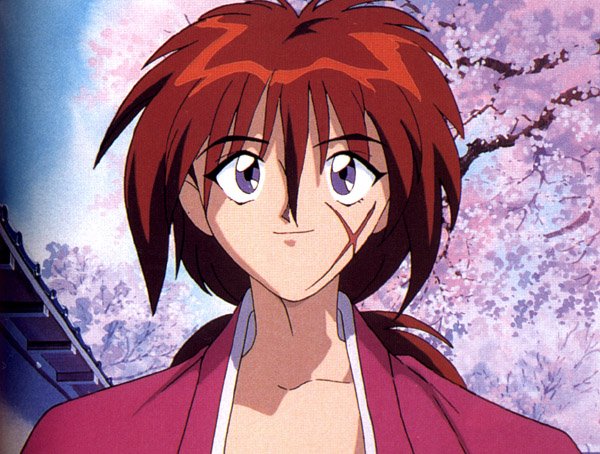Rurouni Kenshin (notably known as Samurai X) started off as a manga written by Nobuhiro Watsuki in an attempt to make a shonen anime series unlike any other. It is a shonen however a very different one. There are lots of adult themes and lacks a lot of shonen overpowered characters for the most part.
It follows the journey of a wandering swordsman named Kenshin Himura. He went under the name of ‘manslayer’ as he was seriously skilled in his craft and could take down any opponent without a sweat. However, things are different now Kenshin is on his path to redemption and atonement for various sins he admitted during the Bakumatsu war as Manslayer. Now that the Meji Era of Japan has begun, Kenshin wields a reverse blade known as Sakabatou and has vowed to never kill again. This allows him to defeat his enemies using his skills but the effects will not result in death.
While seemingly a simplistic shonen battle anime, Rurouni Kenshin actually is a multilayered work steeped in real-world history and deep philosophical questioning about the nature of humanity, the effect of time, and the gray area between good and bad. The overall theme is a complicated mesh between redemption, peace, and defining one’s morality.

The blood he spilled, the egregious crime he committed, and his past, all haunt him. This deadly assassin had a crucial role in the removal of the undesirables in Japan’s path to pro-isolation and the creation of a new Japan without classism ruled by democracy and headed by the rightful heir to the country. He was a samurai dedicated to the cause of a new Japanese regime, while his intentions were in the right place his actions brought nothing but pain. Kenshin watched the light leave the eyes of the man he slew. When the war ended so did the Manslayer but the name and the deeds lived on.
Kenshin was deeply scarred by the flames of war he bathed in as an adolescent and now he is seeking redemption and wields a sword that is created to protect not to kill. The cross-shaped mark that he bears upon his cheeks resembles his desire for atonement. After these 10 years as ronin (samurai without a master) Kenshin is no longer alone, he has got four loners like him. They are living together with a lifelong bond of friendship along with the after-effects of the revolution.
But this bond that brings peace to Kenshin’s soul is it even convenient for a man who slaughtered an endless amount of people to find this peace? No matter how hard he tries to live in this new era he is still plagued by demons of his past and tempts him back to his murderous ways.

The effects of the Bakumatsu war and the evolution of the Meiji era are embodied in the cast of Rurouni Kenshin. The level of depth and complicity put into the characters is always dripping with the flavor each time. Some characters are even based on people that actually lived during the time of the story. This realistic approach allows you to get more sucked in. Everyone gets their moment to develop and grow even the villains.
From its hero to its villains, all of the characters of Rurouni Kenshin feel real life and are some of the best-written characters in fiction. Most of its villains have strong, reasonable, and sometimes justifiable reasons for why they do the things they do and why they act. His personalities mirrored the eras they belong to Manslayer of the Bakumatsu war from the bloody end of the Edo period while Kenshin of the Meiji era of the restoration of peace, the difference between the passionate young man and a wiser adult.
The narrative is one of personal growth, dealing with the losses of the past, sticking to the promises you made for the future, and coming to terms with the negative part of yourself that don’t simply go away. Rurouni Kenshin’s story is not a simple period piece about a man seeking redemption rather there has always been something special to it, making it more than it is.
